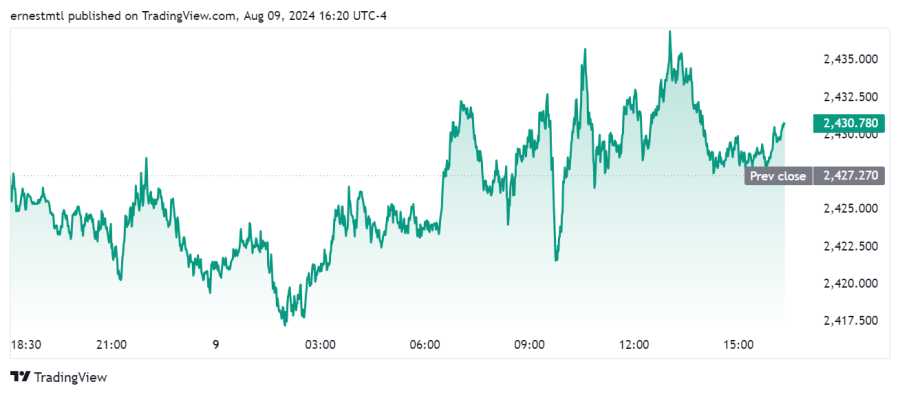No Degree, No Problem: Crafting a Successful Online Career Without Formal Education
Creating a Successful Online Career Without Formal Education
Creating a Successful Online Career Without Formal Education In today's digital age, the traditional college degree is no longer the only path to a successful career. Many online career opportunities don't require formal education, giving job seekers the flexibility to earn a living from anywhere. Whether it's social media management, web development, or graphic design, various fields welcome skilled individuals regardless of their educational background.

Instead of a degree, building a strong portfolio and learning in-demand skills can be the gateway to many remote jobs. Online certifications and practical experience can help job seekers stand out. Remote customer service roles, content creation, and even coding positions are accessible for those who are willing to put in the effort.
With the right strategies, landing a well-paying job without a college degree is achievable. Networking, continuous learning, and leveraging online platforms are key tactics for long-term success. Embracing these nontraditional work environments allows individuals to carve out prosperous careers while enjoying the benefits of remote work.
Key Takeaways
- Online jobs don't always require formal education.
- Skill-building and portfolio development are crucial.
- Effective strategies like networking boost job prospects.
Exploring Online Career Opportunities
Many high-paying remote jobs do not require a college degree and offer the flexibility to work from anywhere. Key fields include digital marketing, web development, and freelance graphic design.
The Rise of Remote Work
Remote work has grown significantly, especially since the pandemic. More companies realized that employees could be productive from home. Remote jobs allow for flexibility, saving time and commuting costs. This shift has opened the door for people without degrees to find good-paying jobs. Important skills include communication, self-motivation, and the ability to work independently.
Popular Online Jobs That Pay Well
Several remote jobs pay well and don't need a degree. Freelance graphic designers create visual content for businesses and can earn a good income through platforms like Upwork. Digital marketers help companies grow online presence, managing ads and social media. Web developers build and maintain websites, a skill in high demand. Copywriters create engaging content, often earning well through experience and a good portfolio.
Sectors Thriving Online
Certain sectors are thriving online, providing numerous job opportunities. Tech companies often hire remote web developers and IT support professionals. Marketing is another area with remote work opportunities, particularly for roles in social media management and SEO. The creative industry, including freelance graphic designers and writers, also benefits from the flexibility of remote work. These fields emphasize skills and experience over formal education.
Building Your Skills Without a Degree
There are many ways to develop the skills needed for a successful online career without attending college. This section explores different methods to gain knowledge and experience, including using online learning platforms, participating in on-the-job training, and creating a personal portfolio or blog.
Learning Platforms and Resources
Online learning platforms offer a variety of courses that can help individuals gain valuable skills. Websites like Coursera and Udemy provide courses in areas such as programming, graphic design, and digital marketing.
Many of these courses offer certificates upon completion, which can enhance a resume. Additionally, there are free resources like YouTube and Google Digital Garage that offer tutorials and interactive lessons.
Creating a Successful Online Career Without Formal Education
Key Platforms:
- Coursera: Offers professional certificates and specializations.
- Udemy: Known for a wide range of affordable courses.
- Google Digital Garage: Free courses on digital marketing and data analytics.
These platforms make it easier to learn new skills at your own pace and apply them in real-world scenarios.
On-the-Job Training and Apprenticeships
Gaining practical experience through on-the-job training or apprenticeships can be crucial. Many tech companies offer apprenticeship programs where individuals can learn software development, system administration, and more.
Trades like electricians and plumbers also provide apprenticeships that do not require a formal degree. This hands-on experience allows individuals to earn while they learn, making it a viable option for many.
For those interested in digital fields, internships can provide similar benefits. Working as an intern in digital marketing, content creation, or web development helps build a solid foundation and increases employability.
Examples:
- Apprenticeships: Electrician, plumber, carpenter.
- Internships: Digital marketing, SEO, content creation.
Creating a Portfolio or Blog
Building a portfolio or blog helps showcase your skills to potential employers or clients. For individuals interested in fields like web development or graphic design, having an online portfolio with completed projects is essential.
Using platforms like WordPress or Medium to write about industry-related topics can demonstrate knowledge and passion. A well-maintained blog can also improve your search engine optimization (SEO) skills, adding another valuable item to your skill set.
Steps to Start:
- Select a platform (e.g., WordPress, Medium).
- Create and regularly update your content.
- Optimize your site for SEO.
Benefits:
- Showcases Actual Work: Demonstrates skills and experience.
- Builds Personal Brand: Establishes an online presence.
- Improves SEO Skills: Enhances discoverability by employers.
Creating a portfolio or blog allows individuals to highlight their skills and achievements in an accessible, professional format.
Effective Strategies for Landing Remote Jobs
Securing a remote job requires specific strategies, including crafting a tailored resume, utilizing networking and job platforms, and honing interview skills. These efforts can help demonstrate your readiness for a remote work environment and attract prospective employers.
Crafting an Impressive Resume
Creating a resume for remote positions means highlighting relevant skills and experiences. Showcase your ability to work independently and highlight your communication skills. Experienced candidates should emphasize previous remote work.
Use keywords like “remote work,” “virtual collaboration,” and “self-motivation” to catch potential employers' attention. As suggested by Career Karma, demonstrating emotional intelligence and self-motivation is critical. Include any certifications or courses to bolster your qualifications, even if they aren't degrees.
Networking and Using Remote Job Platforms
Networking is crucial in finding remote work. Platforms like FlexJobs offer a great starting point for discovering opportunities. Update your LinkedIn profile to reflect relevant skills and experiences. Connect with industry professionals who can offer guidance or job leads.
Attend virtual meetups and webinars to expand your network. Join online communities and forums related to your field. Leveraging these platforms and communities strengthens your professional presence and opens doors to remote opportunities.
Developing Strong Interview Skills
Strong interview skills are pivotal in landing remote jobs. Prepare by practicing common interview questions and focusing on your experiences that illustrate your fit for a remote role. Highlight your ability to manage time effectively and your proficiency with remote communication tools like Zoom or Slack.
During the interview, communicate clearly and confidently. Answer questions by providing specific examples of how you’ve successfully performed tasks in a remote environment. The U.S. Bureau of Labor Statistics emphasizes the importance of showcasing your ability to work independently while maintaining high productivity.
Succeeding Long-Term in a Nontraditional Work Environment
To thrive long-term in a nontraditional work environment, focus on managing your time well, building professional relationships online, and continually improving your skills. Each of these areas is crucial for maintaining productivity and securing your career.
Time Management and Productivity
Effective time management is vital for maintaining productivity in remote jobs. Independent workers often struggle to separate work from personal life, making specific schedules essential. Utilize tools like digital calendars and timers to track tasks and deadlines.
Break tasks into smaller, manageable steps. This can help maintain focus and prevent burnout. Apps like Trello or Asana are excellent for organizing projects into stages and tracking progress.
It's important to create a dedicated workspace. This helps minimize distractions and signals to others that you are in “work mode.” Regular breaks are also crucial. They can boost productivity and prevent fatigue.
Cultivating Professional Relationships Remotely
Building strong professional relationships remotely requires deliberate effort. Regular virtual meetings and check-ins with colleagues and clients are essential. They help maintain open communication and foster a sense of connection.
Tools like Zoom or Slack are great for staying in touch. Being punctual and prepared for meetings shows reliability and respect.
Engaging in remote team-building activities can also be beneficial. These activities can strengthen bonds and improve team morale. Networking online through platforms like LinkedIn helps in meeting new people and exploring opportunities.
Continual Learning and Skill Advancement
In the ever-evolving online job market, ongoing learning is crucial. Enrolling in online courses can keep skills up to date and relevant. Platforms like Coursera or Udemy offer courses on a wide range of subjects.
For tech-related roles, Google Career Certificates provide valuable training. They can prepare individuals for positions like tech support specialist. Participation in bootcamps or workshops, such as those offered by Girls in Tech, can also be advantageous.
Setting aside regular time for learning is essential. This commitment ensures steady progress and keeps skills sharp. It's also helpful to stay informed about industry trends through webinars and professional groups.
Frequently Asked Questions

There are many ways to earn money online without a college degree. This section explores strategies and career options that can help you support yourself and your family without needing a traditional education or job.
What are some strategies for making money online without a college degree?
Many opt for freelancing in areas like writing, graphic design, or web development. Selling products through platforms like Etsy or eBay is another option. Additionally, remote customer service and virtual assistant roles are in demand.
How can I support myself financially without having a traditional 9 to 5 job?
Consider gig economy positions such as rideshare driving or food delivery. Start a small online business, offering services or goods. Some also turn hobbies into income sources, like blogging or YouTube channels.
What are legitimate ways to earn a living online without formal education?
Platforms like Upwork and Fiverr allow people to offer skills and services. Online tutoring and teaching, especially language teaching, are popular. Remote tech support roles are another reliable way to earn online.
Can you achieve financial success without attending college, and if so, how?
Yes, it's possible through hard work and dedication. Many achieve success by building online businesses or freelancing. Investing time in learning valuable skills through online courses can also lead to higher-paying opportunities.
What non-degree career options are available to support a family?
Careers in fields like sales, digital marketing, or IT support often do not require a degree. Skilled trades like plumbing or carpentry are also viable options. Some find long-term success in real estate or owning small businesses. Creating a Successful Online Career Without Formal Education
How can someone without a degree and no job start making an income?
Start by identifying skills or interests that can be monetized. Look for entry-level freelance jobs on platforms like Upwork or Fiverr. Consider short-term gigs to build a portfolio and gain experience.
Share this:
Tim Moseley









.png)


.jpeg)
.jpeg)










.png)














